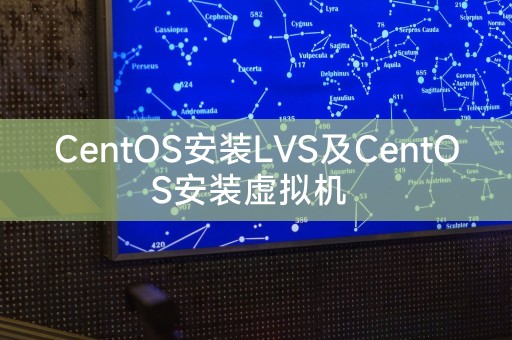
php editor Baicao introduces you to CentOS installation of LVS and CentOS installation of virtual machines. As an open source operating system, CentOS is widely popular in the server field. LVS (Linux Virtual Server) is a high-performance, high-availability server load balancing technology that can improve the scalability and stability of the system. Installing LVS on CentOS can achieve balanced distribution of network traffic and improve the overall performance of the system. At the same time, CentOS is also an ideal virtualization platform. By installing virtual machines, multiple independent virtual operating systems can be run on a physical server, making full use of hardware resources and improving server utilization. This article will introduce you in detail to the steps and precautions for installing LVS on CentOS and installing virtual machines on CentOS, helping you quickly build an efficient server environment.

LVS is a load balancing software based on the Linux kernel, which can distribute access requests to multiple servers, thereby improving System performance and reliability, here are the steps to install LVS on CentOS system:
1. Make sure your CentOS system has the latest software packages and updates installed, you can use the following command to update the system:
sudo yum update
2. Install the LVS software package. You can use the following command to install the LVS software package:
sudo yum install ipvsadm
3. Configuration LVS, edit the following file and add the corresponding configuration:
sudo vi /etc/sysctl.conf
Add the following content at the end of the file:
net.ipv4.ip_forward = 1
Save and exit the file.
4. Enable IP forwarding, use the following command to enable IP forwarding:
sudo sysctl -p
5. Configure the LVS virtual server, create a new configuration file and add The following:
sudo vi /etc/sysconfig/ipvsadm
Add the following:
-A -t 192.168.1.100:80 -s rr
-a -t 192.168.1.100:80 -r 192.168.1.101:80 -g
-a -t 192.168.1.100:80 -r 192.168.1.102:80 -g
6. Start LVS service, use the following command to start the LVS service:
sudo service ipvsadm start
7. Verify the LVS configuration, use the following command to verify the LVS configuration:
sudo ipvsadm -L
If configured correctly, the virtual server and real server details should be displayed.
Virtual machine is a technology that simulates multiple independent computer environments on a physical computer. Installing a virtual machine on a CentOS system allows you to run it on a physical computer For multiple operating systems and applications, the following are the steps to install a virtual machine on a CentOS system:
1. Install virtualization software. You can use KVM (Kernel-based Virtual Machine) to implement virtualization on a CentOS system. ation, you can use the following command to install the KVM software package:
sudo yum install qemu-kvm libvirt virt-install bridge-utils
2. To enable the KVM service, use the following command to enable the KVM service:
sudo systemctl enable libvirtd
sudo systemctl start libvirtd
3. Create a virtual machine. Use the following command to create a virtual machine:
sudo virt-install - -name myvm --ram 2048 --vcpus 2 --disk path=/var/lib/libvirt/images/myvm.qcow2,size=20 --cdrom /path/to/iso/file --network bridge=br0 - -graphics vnc
Replace `myvm` with the name of the virtual machine, `2048` with the memory size of the virtual machine, `2` with the number of CPUs of the virtual machine, `/var/lib/libvirt/images/myvm .qcow2` is the disk path of the virtual machine, and `/path/to/iso/file` is the path of the ISO image file.
4. Start the virtual machine, use the following command to start the virtual machine:
sudo virsh start myvm
5. Connect to the virtual machine, use VNC client or other remote connection Tools connect to virtual machines.
In the LINUX system, there is a very useful command called `grep`, which is used to search for a specified string in a file. The basic syntax of the `grep` command As follows:
grep [options] pattern [file]
`options` is an optional parameter, `pattern` is the string to be searched, and `file` is the file name to be searched.
To search for the string `hello` in a file named `example.txt`, you can use the following command:
grep hello example.txt
This will Find all lines containing the string `hello` in the file and display them on the terminal.
The `grep` command also supports searching using regular expressions. You can use different options to control the behavior of the search. By mastering the `grep` command, you can search for files in the LINUX system more efficiently. and text processing.
The above is the detailed content of CentOS installs LVS and CentOS installs virtual machine. For more information, please follow other related articles on the PHP Chinese website!




